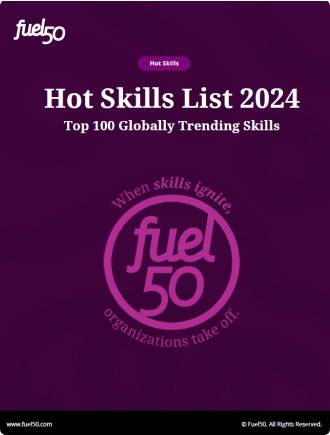Remember Nokia? They were the hottest thing since sliced bread—until the iPhone. Then, Nokia quickly lost their market share, and while many attribute this to a lack of innovation, the real culprit was something deeper: They realized their talent gap too late.
The company had the resources, market position, and potential to compete, but they failed to align their workforce with the future of mobile technology.
And Nokia isn’t alone: Kodak, Blackberry—these and other similar companies had industry dominance but underestimated the speed at which skills and market demands would evolve. As a result, they were too slow to identify the gap.
Left unchecked, a talent gap can erode innovation, impede decision-making, and, ultimately, lead to a company’s decline.
In this article, we’ll explore what talent gaps are, why they emerge, and how organizations can proactively pinpoint and address them through a structured analysis. We’ll also break down the steps to conduct one and examine how tools like Fuel50 can help companies bridge talent gaps and stay ahead of workforce shifts before they become existential threats.
What are talent gaps and why do they occur?
A talent gap is the disparity between the skills an organization needs to achieve its objectives and the competencies its workforce currently possesses. These gaps can manifest in various ways, such as critical roles remaining vacant, declining productivity, or a growing dependence on external hiring.
For example, a retail company shifting to e-commerce may find their existing staff lacks expertise in digital marketing, data analytics, and UX design. That disconnect can hinder the business’s ability to compete online, leading to stagnation or loss of market share.
Talent gaps arise due to several factors, such as:
- Technological advancements continuously reshape industries, often outpacing workforce skill development.
- Shifting market demands require businesses to adapt, yet their workforce may not evolve at the same pace.
- Workforce attrition, whether from retirements or unexpected resignations, can leave critical vacancies.
- Ineffective workforce planning means organizations fail to anticipate future skill needs, which leads to last-minute, costly hiring decisions.
What is a talent gap analysis? And do you know your organization is struggling with talent gaps?
A talent gap analysis systematically assesses the difference between an organization’s current workforce capabilities and the skills required for future success. It helps businesses identify areas skill shortages, roles at risk due to a lack of qualified employees, and the training or hiring strategies necessary to bridge those gaps.
For example, a manufacturing firm implementing automation might discover their technicians lack the programming skills needed to maintain the new machinery. Without a talent gap analysis, the company could face costly downtime and inefficiencies.
Recognizing the signs of a talent gap is imperative. Here are some indicators your organization may be struggling:
- Difficulty filling critical roles: If key positions remain vacant for extended periods, it may signal a shortage of necessary skills within your existing workforce.
- Decreased productivity or innovation: Teams unable to meet performance expectations or generate new ideas may lack the expertise required to drive results.
- High turnover in key roles: Employees often leave when they feel unprepared for their responsibilities or see no opportunity for skill development.
- Increasing reliance on external hiring: If your company frequently hires externally instead of promoting from within, it suggests a failure in internal talent development.
What are the benefits of running a talent gap analysis?
A talent gap analysis is a strategic asset that drives business resilience and growth.
It helps you plan for your future workforce
Understanding skill gaps allows organizations to anticipate personnel needs and align talent strategies with long-term business goals. Instead of reacting to shortages, companies can proactively build a talent pipeline that ensures business continuity.
It allows for cost-efficient talent management
Addressing talent gaps through upskilling and internal mobility is often more cost-effective than recruiting externally. Hiring new employees incurs onboarding and training expenses, while investing in existing personnel through targeted training and development programs fosters loyalty and reduces turnover.
It strengthens employee engagement and retention
Employees who receive opportunities for growth and development are more likely to stay with an organization. HR teams can use a well-executed talent gap analysis to ensure career pathways exist, thus reducing dissatisfaction and increasing retention.
It gives your business a competitive edge
Organizations with future-ready workforces adapt faster to industry changes. Whether it’s implementing new technology or responding to market shifts, companies that develop internal talent and equip employees with new skills are better positioned to lead, rather than lag behind.
How to run a talent gap analysis in 6 steps
Manually conducting a talent gap analysis requires a structured approach. While technology can streamline the process, you can still execute it effectively by following these steps.
Define business objectives
A talent gap analysis should align with your organization’s strategic priorities. Are you expanding into new markets? Implementing new technologies?
You need a clear understanding of your business objectives to give your skills analysis direction. Engage with leadership to determine the key growth areas and challenges your company anticipates and how they impact business priorities. Define the roles, competencies, and expertise that will be crucial to achieve these goals.
Assess current workforce capabilities
Determining workforce capabilities is more than compiling a list of employee skills. A superficial inventory won’t provide the depth needed to make informed decisions. Instead, take a multi-layered approach:
- Performance reviews and manager evaluations: Identify skill strengths and gaps based on real work outcomes rather than self-assessments alone.
- Project-based analysis: Examine past projects to assess whether teams had the necessary skills to execute successfully, or they struggled due to deficiencies.
- External benchmarking: Compare your workforce’s skills to industry standards and competitors. This helps avoid insular thinking and prevents you from falling behind.
- Skills validation through testing: Self-reported skills can be unreliable. Use assessments or certifications to verify actual proficiency levels.
Identify future skill requirements
How do you determine what skills your workforce will need in the future? Companies often make the mistake of relying on outdated job descriptions or internal assumptions. Instead:
- Analyze industry reports and market trends: Stay informed on how roles are evolving in your industry.
- Consult experts and functional leaders: Departmental heads often have firsthand insights into upcoming challenges and necessary competencies.
- Follow emerging technologies and regulatory changes: Automation, AI, and new compliance requirements can reshape skill demands almost overnight.
- Consider workforce demographics and succession planning: If a significant portion of your workforce is nearing retirement, you may need to build new pipelines for leadership and technical expertise.
Analyze gaps and prioritize
Some skills gaps are minor while others deserve your immediate attention. Organizations often fail by treating all deficiencies as equally urgent. Instead, prioritize gaps based on:
- Strategic impact: Which skills are most critical to achieving business objectives?
- Urgency: Which gaps will create immediate disruptions? Which will be critical in the next three to five years?
- Internal versus external resolution: Can these gaps be filled through upskilling, or will they require external hiring?
- Cost-benefit analysis: Some skills may be too expensive to build internally, making strategic hiring a better option.
Develop an action plan
Once you’ve pinpointed the most pressing gaps, build a structured plan to address them. Depending on your findings, your approach might include:
- Upskilling and reskilling programs: Provide relevant learning opportunities, from technical training to leadership development.
- Hiring and workforce planning: Identify roles that you must fill externally and develop targeted recruitment strategies.
- Cross-functional mobility: Encourage workers to transition into roles that align with evolving business needs.
- Mentorship and knowledge transfer initiatives: Retiring employees can help bridge gaps by mentoring less-experienced staff before their departure.
Monitor and adjust
A skills gap analysis is not a one-time event—it should be a continuous process. Track the impact of your talent development efforts, revisit workforce needs regularly, and refine your strategy based on business shifts and market changes. Use HR analytics tools to measure progress and make data-driven adjustments along the way.
Manually conducting a talent gap analysis requires a structured approach. While technology can streamline the process, organizations can still execute it effectively by adopting a systematic methodology.
Use Fuel50 to spot talent gaps before they occur
A robust talent pool is a powerful asset that supports both long- and short-term business goals. Armed with the right skills, your organization can build the agility it needs to keep up with industry changes now and in the future.
Here’s how Fuel50’s talent marketplace tool can help you:
Create a dynamic skills inventory with expert-driven skills ontology
Fuel50’s advanced skills ontology transcends traditional taxonomies by providing a living ecosystem of over 5,000 unique capabilities, specialist skills, and tools.
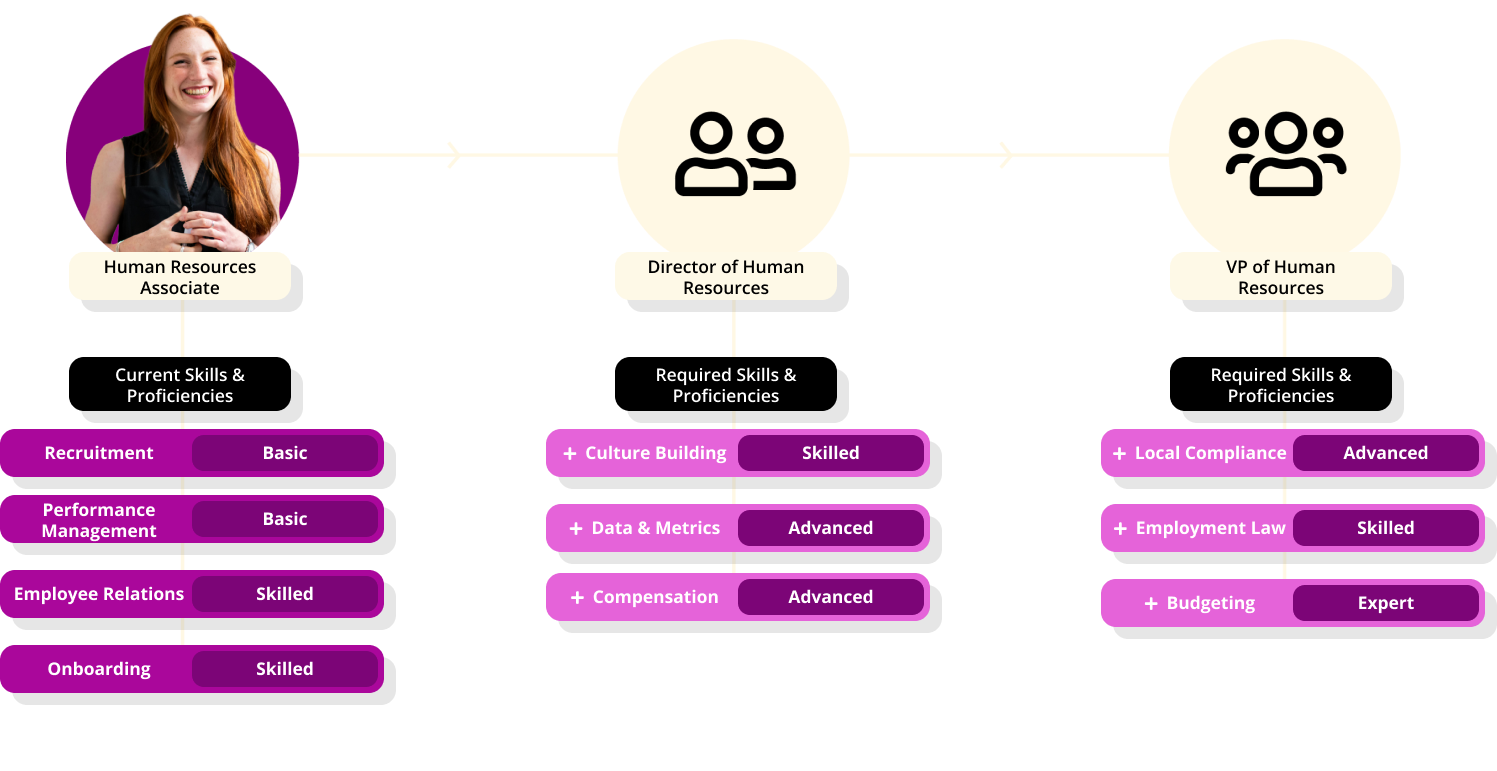
More than a skills database, it’s a carefully curated framework developed by I/O psychology experts that grows and evolves alongside your organization.
What sets Fuel50’s skills ontology apart is its depth and practicality; each skill comes with clear definitions and outcome-focused proficiency level descriptors, which remove the ambiguity that often plagues skills assessment.
The system also includes suggested developmental actions for each skill, making it applicable for both employees and managers. Moreover, built-in bias checks ensure inclusivity and fairness, while continuous updates reflect emerging skills and market trends.
Enable data-driven skills insights
On the journey to becoming a skills-based organization, visibility is crucial. Fuel50’s analytical capabilities reveal unprecedented insights into your organization’s skills landscape.
This goes beyond simple skills mapping to provide real-time understanding of skills distribution, critical gaps, and future needs based on market trends.

CarTrawler’s experience illustrates the power of this knowledge: By leveraging Fuel50, they assessed over 2,800 skills across their organization, which enabled them to make informed decisions about their talent development and deployment. That level of transparency helped them transition from intuition-based to data-driven talent decisions.
Foster internal mobility through AI-powered matching
Where a skills-based organization truly shines is in its ability to deploy talent flexibly. Fuel50’s talent marketplace uses sophisticated AI to connect skills to opportunities in ways that traditional, job-based systems can’t.
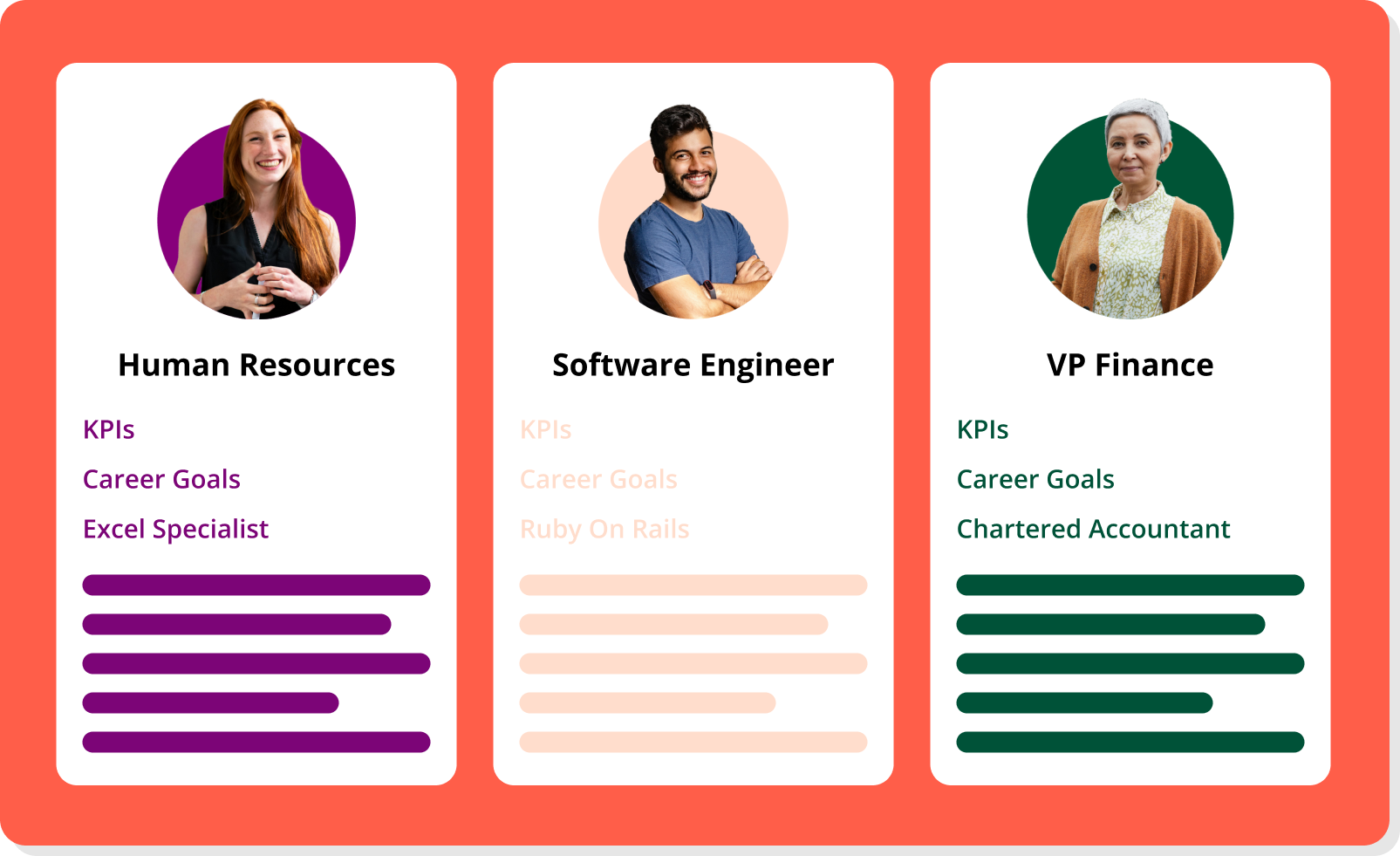
The system considers both current skills and growth potential, enabling cross-functional moves that a typical organizational structure might overlook.
UCI’s experience demonstrates the impact of this approach: After implementing Fuel50’s talent marketplace, they achieved a 50% reduction in attrition. That dramatic improvement was the result of giving employees visibility into opportunities they might have missed in a traditional, job-based system.
Support skills-based career development
A skills-based organization empowers employees to take charge of their own development.
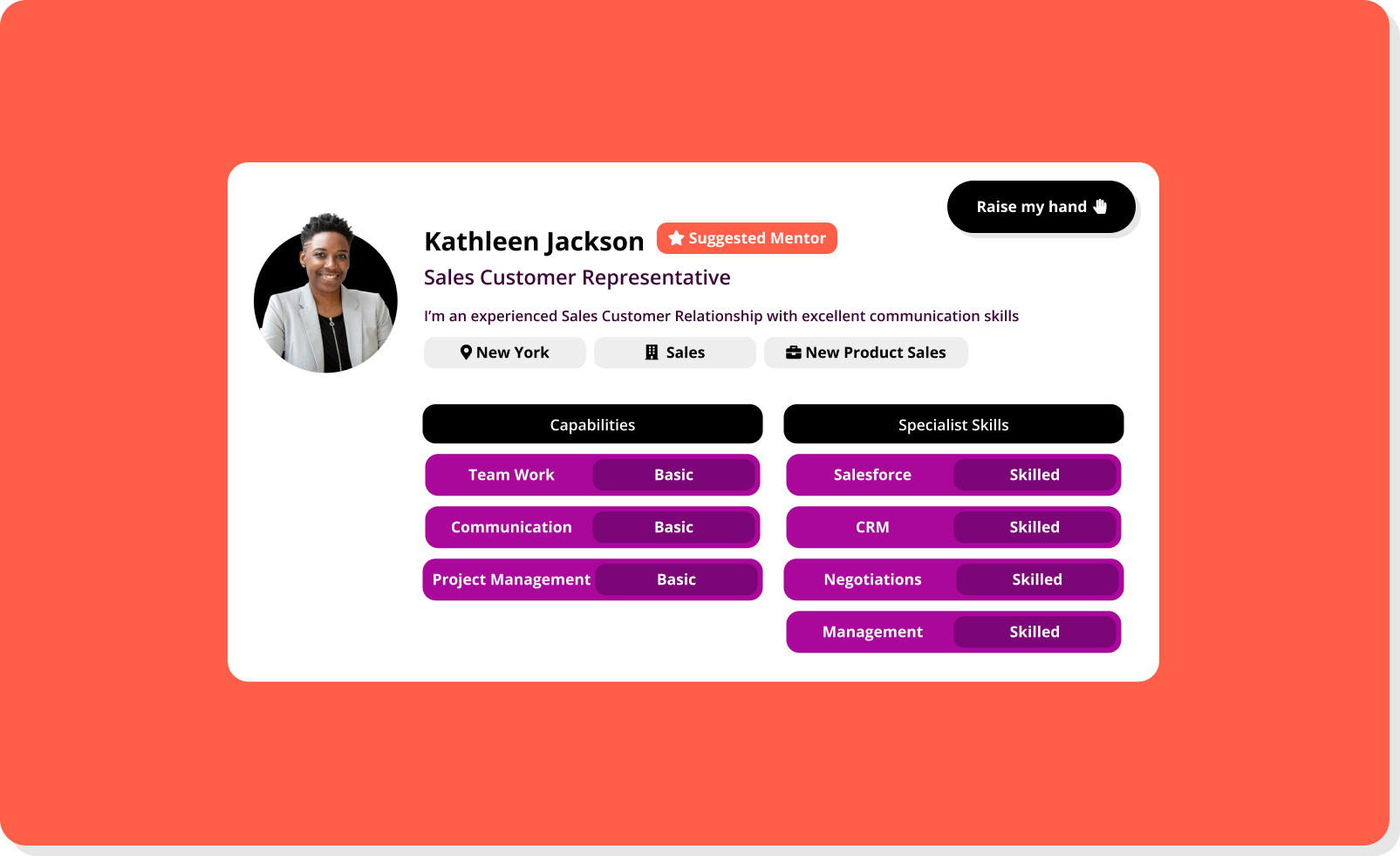
Fuel50 makes this possible by providing comprehensive career development tools that focus on skills rather than traditional job ladders. The platform offers sophisticated skills assessments, visibility into in-demand skills, and tailored learning recommendations.

KeyBank‘s illustrates the efficacy of Fuel50’s methods through their remarkable 72% user return rate on the platform. This shows employees actively engage with skills-based career development when given the right tools and support.
Enable skills-based workforce planning
Strategic workforce planning takes on new dimensions in a skills-based organization. Fuel50 provides leaders with powerful tools to understand their current skills landscape and plan for future needs.
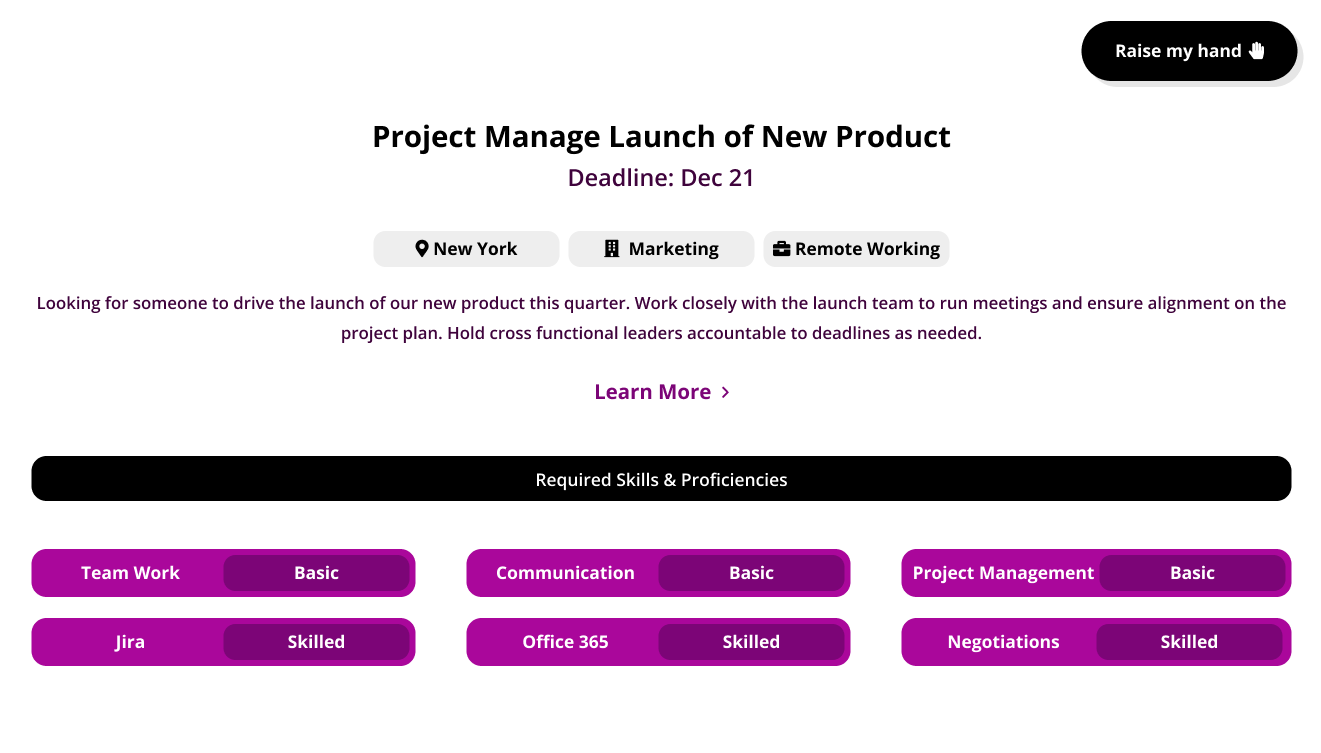
The platform enables sophisticated skills gap analyses at both organizational and team levels, while predictive analytics help identify emerging needs before they become critical gaps.
This capability has proved transformative for organizations like Allied Irish Banks, who used Fuel50 to achieve a 96% return user rate and significantly improved their ability to plan for future skill needs.
Facilitate cultural transformation
Perhaps most importantly, Fuel50 supports the cultural transformation required to become a skills-based organization.
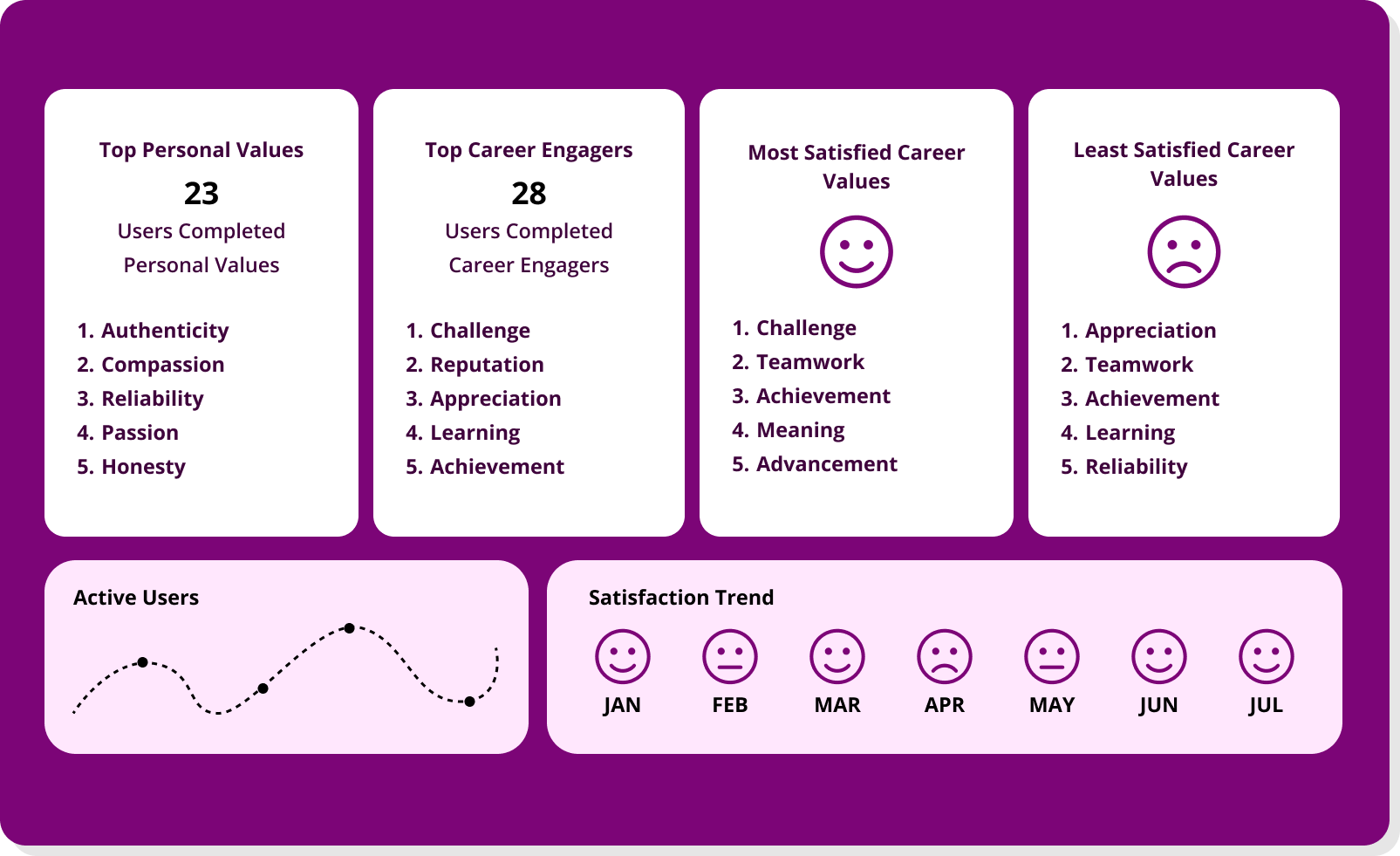
This isn’t just about implementing new technology; it’s about changing how people think about their work, careers, and development.
The platform offers comprehensive change management support, helping organizations communicate the value of skills-based approaches and demonstrate impact through relevant metrics.
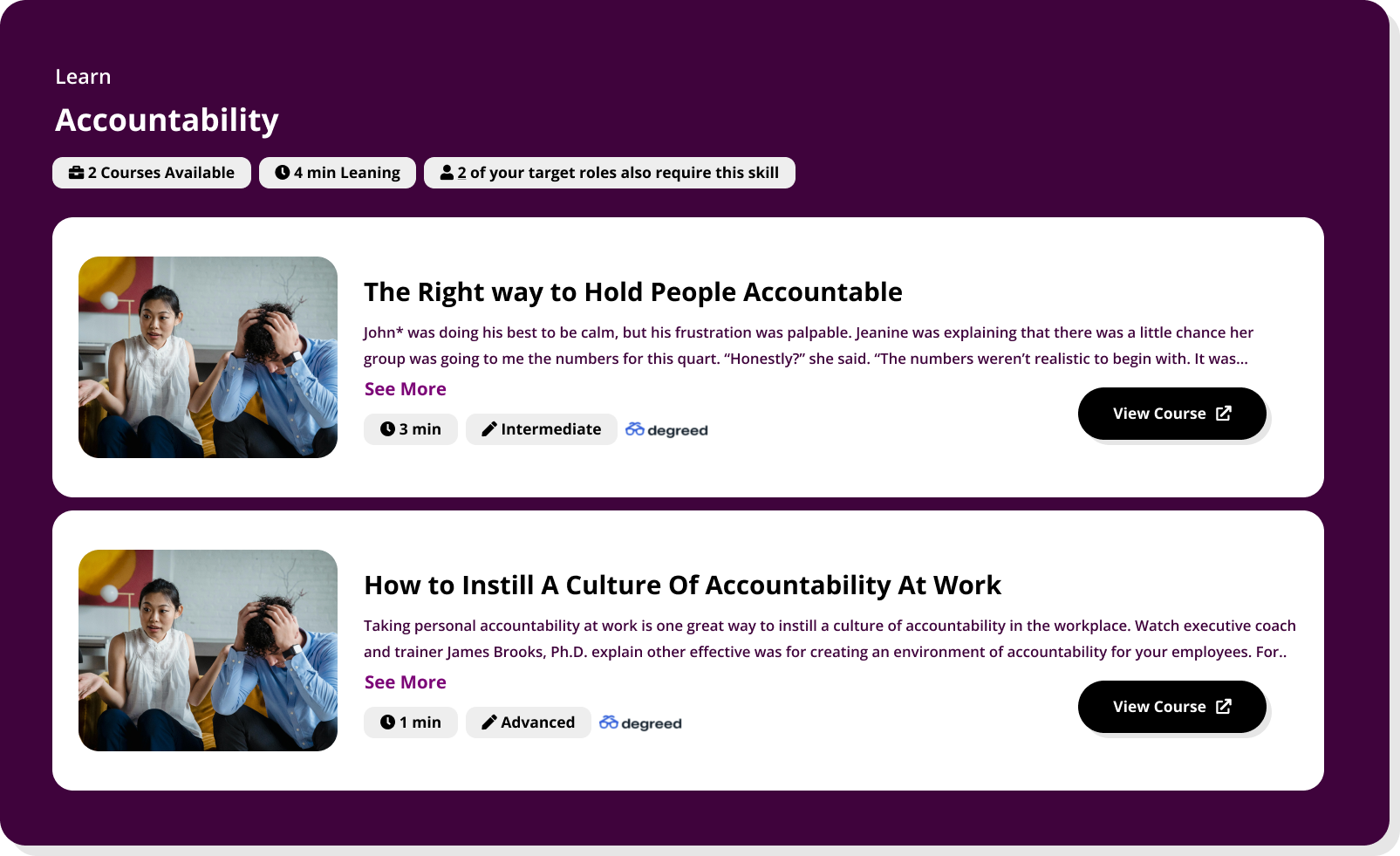
Texas Health Resources exemplifies this transformative journey through their CareerDrive portal: Powered by Fuel50, they achieved a 91% satisfaction rate, demonstrating how the right platform can drive widespread adoption of skills-based practices.
If you want to learn more about how Fuel50 can help you transform into a skills-based organization, request a demo here.



